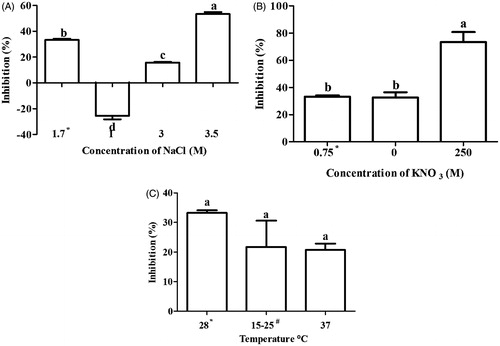Figures & data
Figure 1. Effect of salinity (A), nitrogen (B) and temperature (C) stress on the cell growth of Dunaliella salina. *Under normal condition, Dunaliella salina was cultivated in 1.7 M NaCl, 0.75 mM KNO3 and 28 °C. #Dunaliella cultures were oscillating between 15 °C and 25 °C.
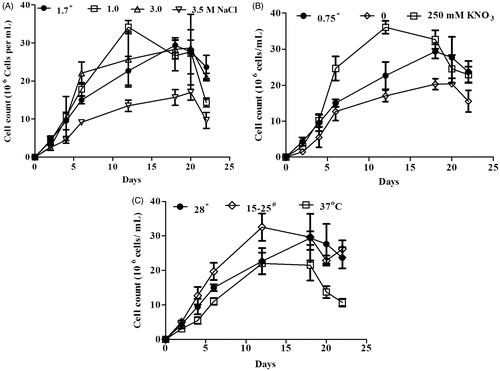
Figure 2. Effect of salinity (A), nitrogen (B) and temperature (C) stress on the carotene and chlorophyll content of Dunaliella salina. Means followed by the same letter are not significant at p < 0.05. *Under normal condition, Dunaliella salina was cultivated in 1.7 M NaCl, 0.75 mM KNO3 and 28 °C. #Dunaliella cultures were oscillating between 15 °C and 25 °C.
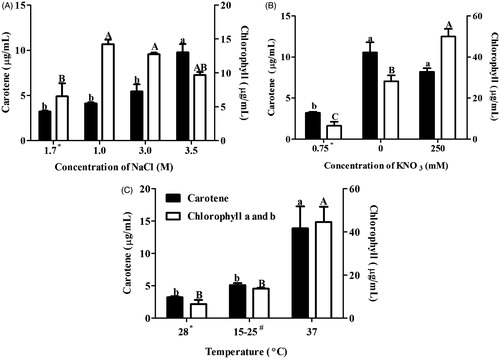
Figure 3. Free radical scavenging (DPPH) activity of Dunaliella extracts under different stress conditions (A) Salinity, (B) nitrogen and (C) temperature stress. Means followed by the same letter are not significant at p < 0.05. *Under normal condition, D. Salina was cultivated in 1.7 M NaCl, 0.75 mM KNO3 and 28 °C. #Dunaliella cultures were oscillating between 15 °C–25 °C.
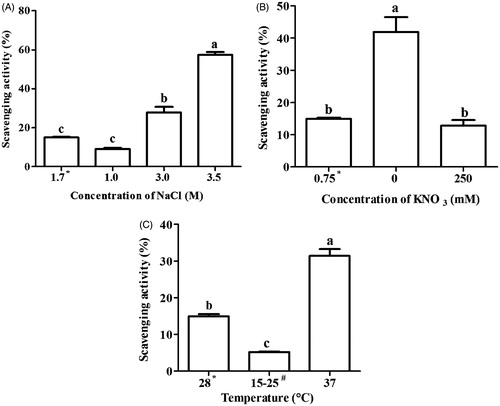
Figure 4. Total reducing power of Dunaliella extracts under different stress conditions: (A) salinity, (B) nitrogen and (C) temperature stress. *Under normal condition, Dunaliella salina was cultivated in 1.7 M NaCl, 0.75 mM KNO3 and 28 °C. #Dunaliella cultures were oscillating between 15 °C and 25 °C.
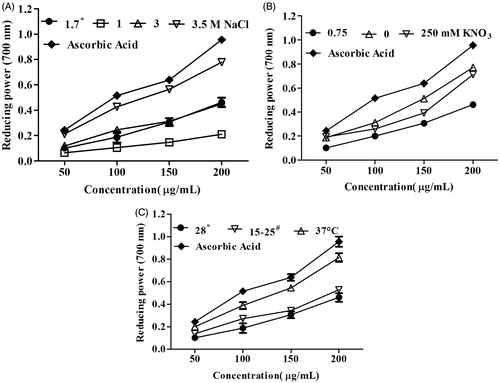
Figure 5. Effect of Dunaliella salina grown under salinity (A) nitrogen (B) and temperature (C) stress condition on the cell proliferation of MCF-7 (breast cancer) cell line. Means followed by the same letter are not significant at p < 0.05. *Under normal condition, Dunaliella salina was cultivated in 1.7 M NaCl, 0.75 mM KNO3 and 28 °C. #Dunaliella cultures were oscillating between 15 °C and 25 °C.
